Genes control a cats colors and patterns.
These genes are either turned on or off, creating the huge range of combinations.
In this article, I’m going to share some cool facts about cat coat patterns. Find out what makes your cat black, grey, white, or multi-colored.
Let’s get into the article.
Our goal with this website is to help cat owners with their cat’s health. I am not a veterinarian and I recommend seeking the advice of a vet.
1. A cat can have one to three colors on its coat
Cats can get up to 3 colors on their coat.
Let’s take a closer look at the possibilities.
Single Color (Solid Coat)
A solid coat cat is a one-color cat. Solid black, brown, and a solid white coat are the most common solid coat colors.
Grey, silver, and lilac are rarer due to genetics.
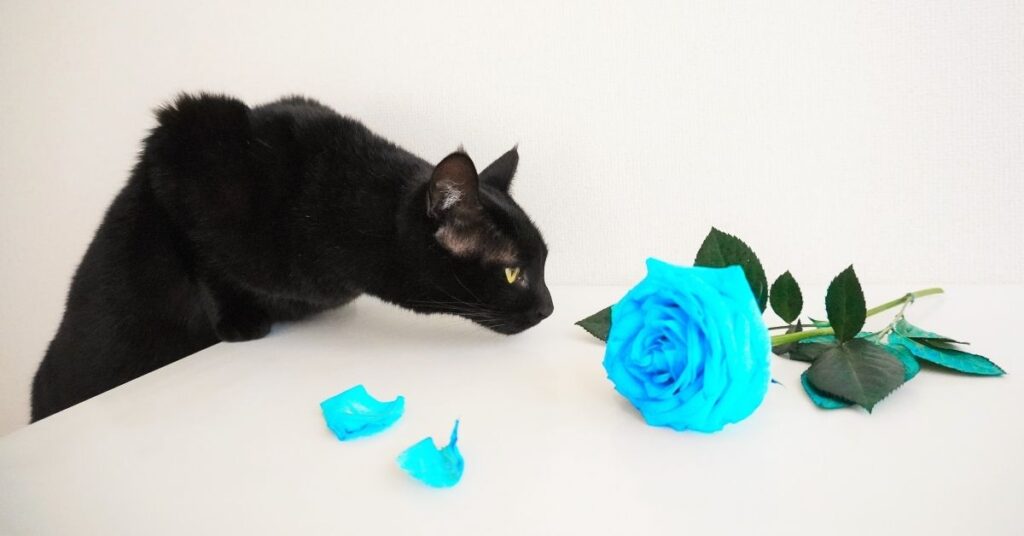
Bi-Color (Piebald)
As the name would suggest, a bi-color cat has two colors. Another name for a bi-color cat is a piebald cat.
One common coat pattern is the tuxedo cat. This is a black cat with white spots.
The genetics of bi-color cats is due to a gene called KIT.
During embryonic development, the pigment cells divide from the back of the embryo to the front.
In piebald cats, the cells aren’t dividing fast enough to cover the entire cat with pigment. These leave parts of the belly and face (front areas) with white spotting.

Tri-Color (Calico)
A cat with three colors is a calico cat.
They have white, orange, and a shade of black. Calico cats are almost always females due to being a sex-linked gene.
I’ll discuss more on this in the article.
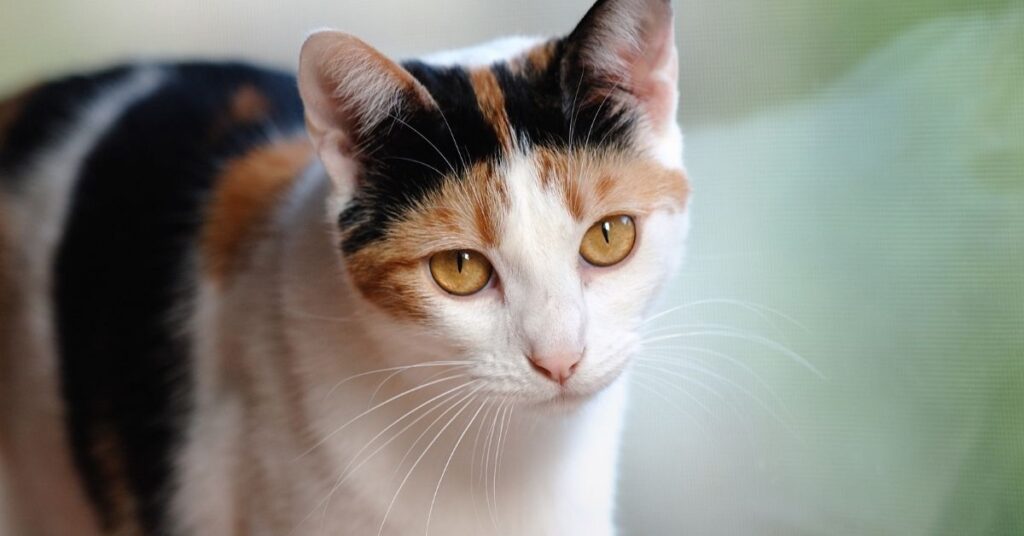
2. The rarest color of the cat is silver
The rarest cat colors are silver, lilac, and fawn.
The reason for this is due to genetics.
There are three sets of genes that influence coat color: the feline primary coat color gene, dilution gene, and red color coding gene.
Let’s talk about the first gene.
Feline primary coat color gene
With genetics, you get two alleles (one from each chromosome).
A female cat has two X chromosomes, whilst a male cat has an X and Y chromosome.
Each chromosome has a copy of the feline primary coat color gene.
On each gene, it appears as a dominant or recessive version of the gene.
The difference between a dominant and a recessive gene, in this case, is the recessive gene only changes the color if there are two copies (i.e. recessive homozygote).
The feline primary coat color gene has one dominant (B) and two recessive alleles (b/b1).
The dominant gene codes for black, and the two recessive genes code for brown (b) and cinnamon (b1). A cat can only be brown or cinnamon if it has two recessive copies of either gene.
This means a brown or cinnamon cat is rarer than a black cat.
But wait, there’s more:

Dilution Gene
Cats have another gene called the dilution gene.
The dilution gene (D/d) encodes for melanophilin and is responsible for creating different color tones.
This gene modifies the existing color the cat got from the primary feline coat color gene.
For a different color to occur, the cat needs two recessive dilution genes (d/d).
This will modify the existing color from the red color gene and primary color gene.
If there aren’t two recessive genes, then no color modifications occur.
So why are silver and fawn rare colors?
The only way to get a silver or fawn cat is to have two sets of recessive dilution genes and two recessive primary feline coat color genes (either brown or cinnamon).
The chance of this happening is lower than getting a heterozygote (mixture of recessive and dominant genes) which makes these colors rare.
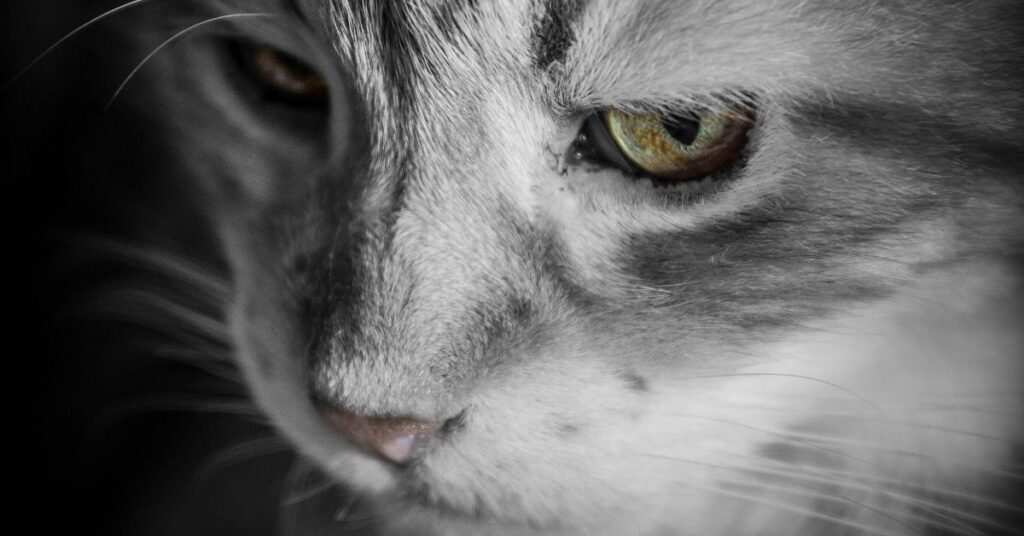
3: Most orange cats are male
If you’ve seen any Garfield cartoons you’ll also be familiar with male orange cats.
You may have noticed that most orange cats are male food lovers.
Why?
Let’s go back to genetics.
The X chromosome contains the gene for orange color (O/o). This gene codes for – you guessed it – orange.
Males only get one X chromosome, which means they will only have one copy of the orange color gene. A dominant allele (O) codes for black or brown, whilst the recessive codes for a mixture of red and orange.
A female has to get two recessive genes to apply the full orange shade (on both X chromosomes), whereas male cats get a Y chromosome which doesn’t affect the shade.
This means it’s easier for a male cat to be orange. To guarantee an orange female (if you want) then you’ll need an orange male and orange female to breed.
This will ensure the offspring always get two recessive genes for orange (which females need).
If you breed a calico cat (female with only one recessive orange gene) and an orange male, there’s a 50/50 chance of a female orange solid coat cat.
This is because the litter will get a 50% chance of getting a dominant (which won’t produce a solid orange female cat) or recessive gene.
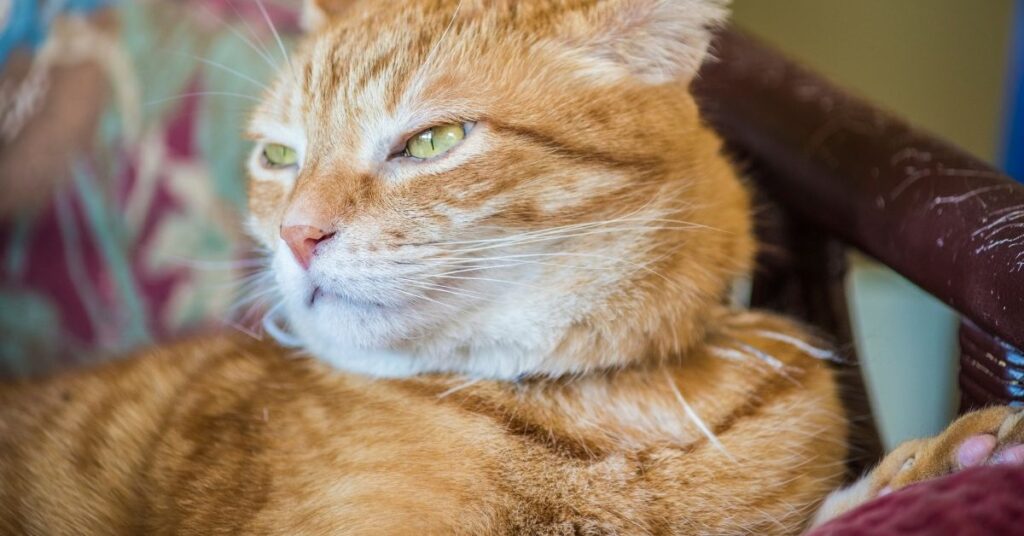
4. A tabby is a pattern, not a breed
A tabby cat is a cat with a distinctive coat pattern that appears in up to 80% of all cats.
This pattern can come in a variety of colors, stripes, and blotches due to variations in genetics.
A tabby isn’t a breed, but a general name for a cat with characteristic tabby patterns. Tabby cats can appear in all sorts of colors and patterns.
There is a lot of history regarding tabby cats. They appeared as far back as ancient Egypt, whose love and domestication of cats is well known.
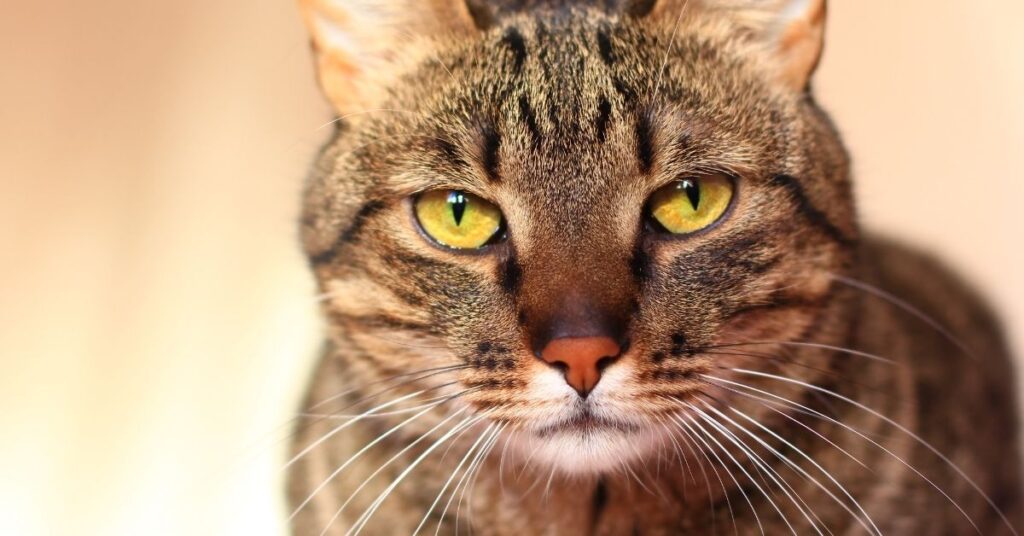
5. There are 5 types of tabby cats
There are actually a good variety of tabby cats. Let’s take a look at them.
Classic Tabby (also called a blotched tabby)
This is a cat with a blotched appearance. The patterns are random series of stripes and shapes, with the distinctive M on the forehead.
Breeds include the American Shorthair, Bengal, Birman, and Siamese.

Mackerel Tabby
These tabby cats have rings around the tail and legs.
They also have bands of stripes along the body. One thick stripe lines the back of the cat and they also have the classic M marking on their forehead.

Spotted Tabby
As the name would suggest, spotted tabbies have spots.
The spotted tabby has bands of spots that vary in shape and size. Broken spots can also appear.

Patched Tabby
A patched tabby has patches of brown, red, orange, black, brown, or cream on the coat.
Tortoiseshell cats are a type of patched tabby.

Ticked Tabby
These cats have light and dark colorings on their hair. This creates a shimmering color that looks like a solid color cat, but with a distinctive variation of hair coloring.
There’s no pattern on the coat of a ticked tabby. The ticked pattern is the most subtle of the tabby patterns.
Read more:
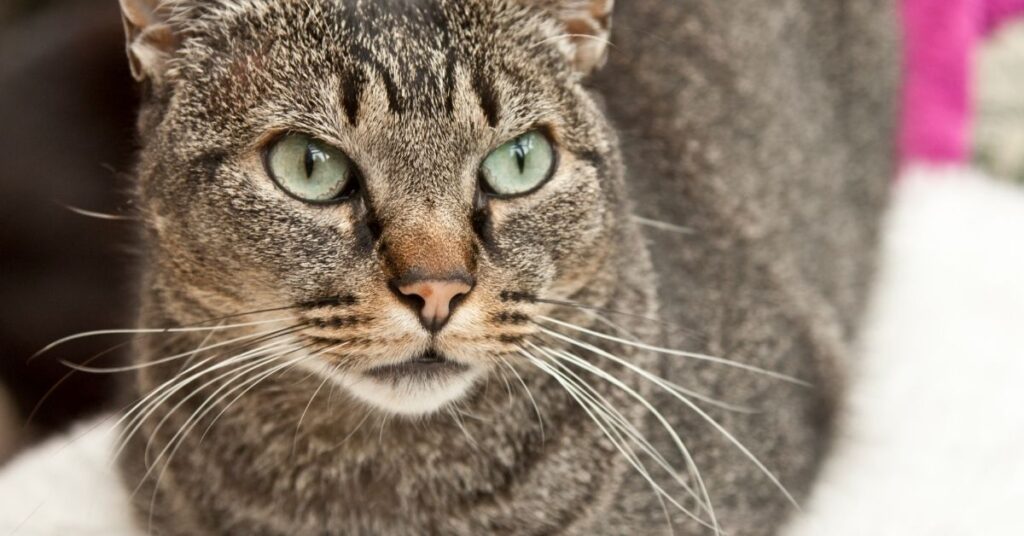
6. Tricolor cats are almost always female
A tricolor cat, as the name would suggest, has three colors on it.
A calico cat is a three-colored cat. Calico cats are usually female.
What is the reason for this?
Females get two copies of the orange coding gene (O), which is only found on the X chromosome.
Remember our friends the orange cats?
Males will produce orange if they have the orange allele coding for orange pigment. If they have a non-orange allele, they will have a black or brown pigment.
Females have two alleles of the orange gene. This means they can be either be homozygotes for orange (O/O), homozygotes for non-orange (o/o), or heterozygotes (O/o).
Heterozygotes have one copy of orange pigment (O) and one non-orange copy (o).
What happens is the O pigment silences the non-orange gene from expressing orange. This creates patches of orange with brown/black.
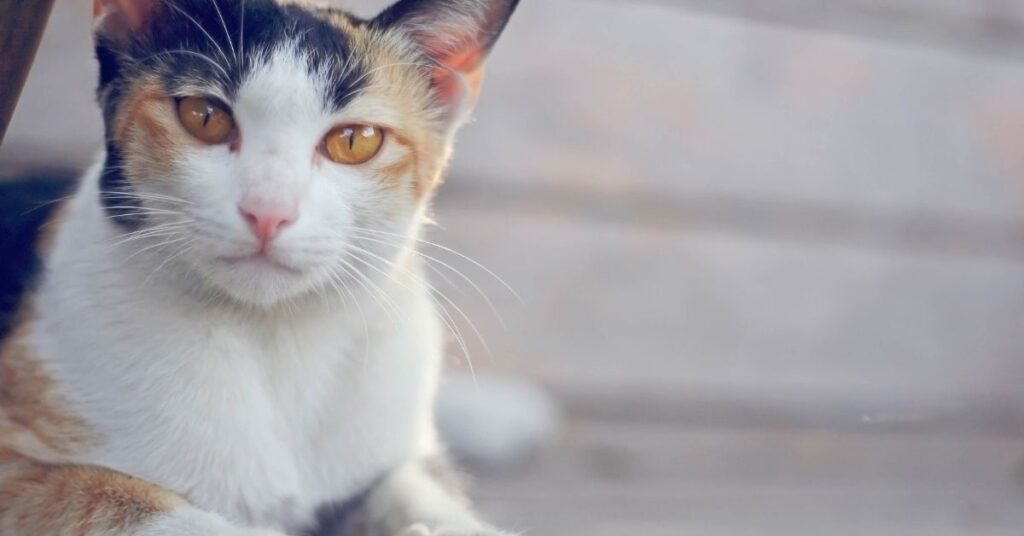
Why does the white color appear on a calico cat?
Now you know why a calico cat has orange and brown.
However, we still haven’t accounted for the white patches.
The KIT gene (W/w) dictates the presence of white on a cat.
There are two forms of the dominant white gene, the white spotting or the dominant white gene. A dominant homozygote for the latter will result in a default white cat, whilst the former results in a spotted white cat (e.g. calico cat).
So a calico cat has a gene coding for white spotting and a combination of orange genes from each X chromosome.
A calico cat is the same as a piebald cat, with the two colors from the X chromosomes on top.
White patches are due to pigment cells not multiplying enough during the embryonic stage of development. This means not enough cells go from the back (where they start) to the front of the cat.
That’s why the white patches of the cat are on the front (belly side) of the calico cat, and not the back or rest of the body.
However, a tortoiseshell cat is similar to a calico cat but does not have the white spotting gene activated.
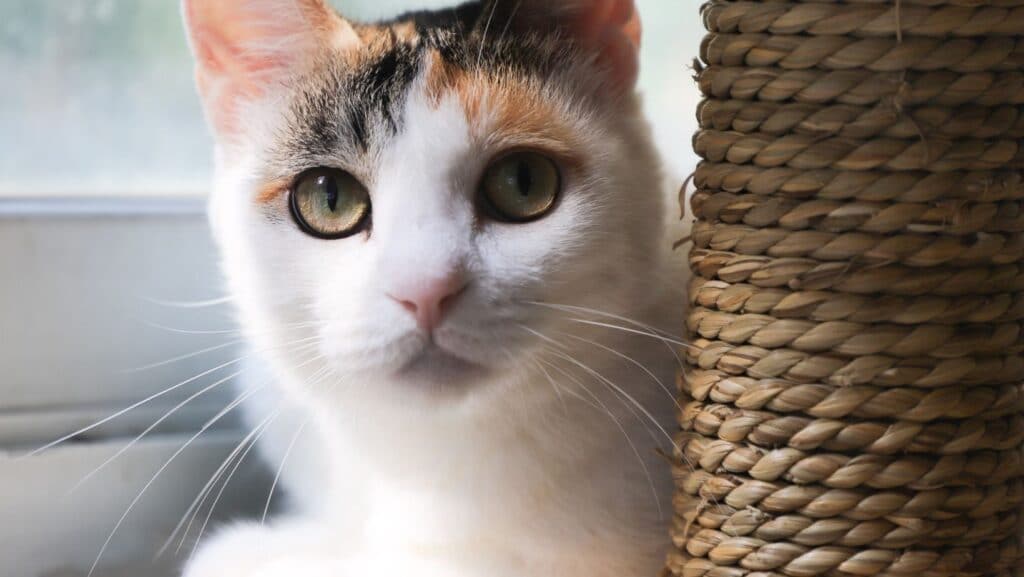
Why do tortoiseshell cats not have white?
Tortoiseshell cats have a combination of brown/black, red/orange colorings on the fur. These cats usually have patches of red and orange (tortoiseshell cats are a type of patched tabby).
The piebald or bi-color cat could only have white with another color, but the tortoiseshell has the ability to have darker black and orange type patterns.
A tortoiseshell can have complete pigmentation of the coat (similar to a solid cat) or smaller patches of white.
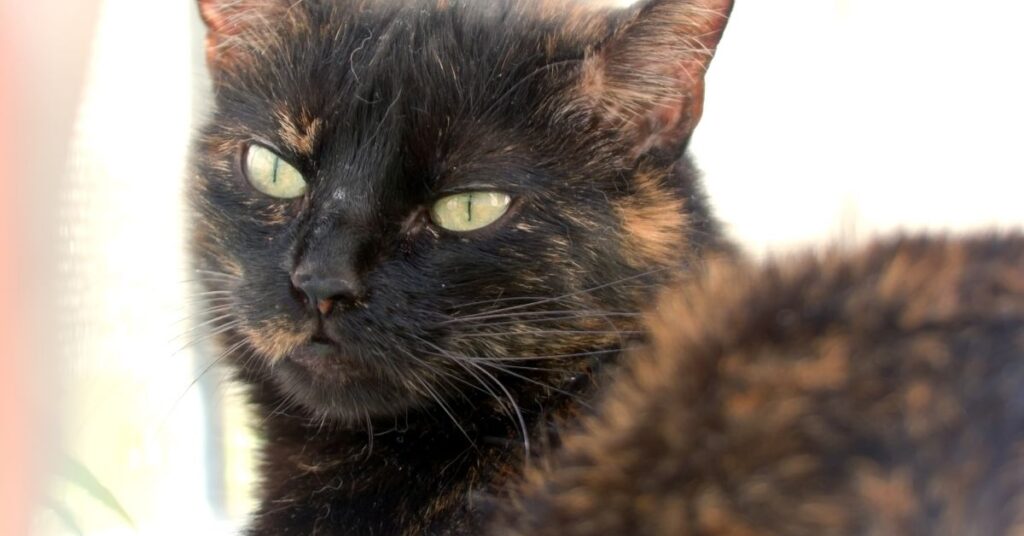
7. The most common cat pattern is a brown mackerel tabby
The most common general cat pattern is the tabby cat. Brown mackerel tabby cats are the most common of the tabby.
80% of all cats are a type of tabby cat.
In terms of colors, black should appear more often than not. Black gets coded on the primary feline color gene and is a dominant gene. It, therefore, does not require two (rarer) copies to appear.
In terms of colors, black should appear more often than not. Black is encoded on the primary feline color gene and is a dominant gene. It, therefore, does not require two (rarer) copies to appear.
However, genes aren’t the only thing that influences the appearance of colors. Selective breeding and adoption rates of different cats influence how rare certain colors and patterns are.
In other words, some felines will tend to appear more because they get adopted more by homes to be domestic cats.
White cats have one of the highest adoption rates in shelters, whereas black cats have one of the lowest.
This is ‘black cat bias’ and may be due to long standard superstitions involved in black cat mythology.
Read more:
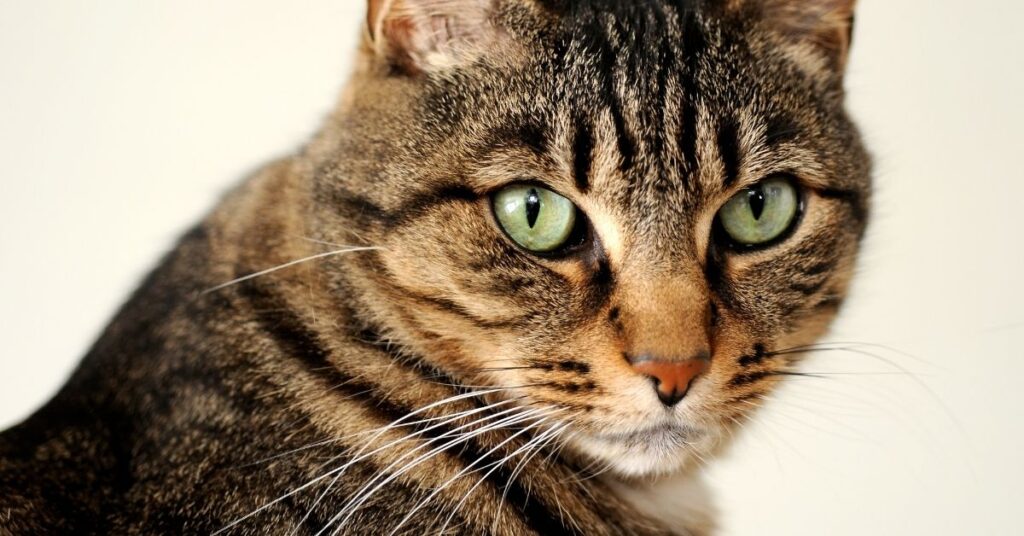
8. A colorpoint cat has thermal sensitive genes
Now and then you’ll see a cat that looks like it has stuck its nose in the dirt.
The cat has darkened extremities on the face (nose), paws, and tail.
These markings are points or color points. The body is typically a lighter shade.
What is going on here?
The reason for these color points is due to a mutation causing albinism in cats. The mutation occurs in the allele for tyrosinase, which is an enzyme needed to produce pigment.
The enzyme is temperature-sensitive.
As a cat grows into an adult the parts of the body are the coldest switch on the enzyme and block pigment, resulting in the pointed appearance. Pointed breeds include the Siamese and Burmese.
Mixed breeding can result in further variations. The points can be dark or colored (the latter called color points).
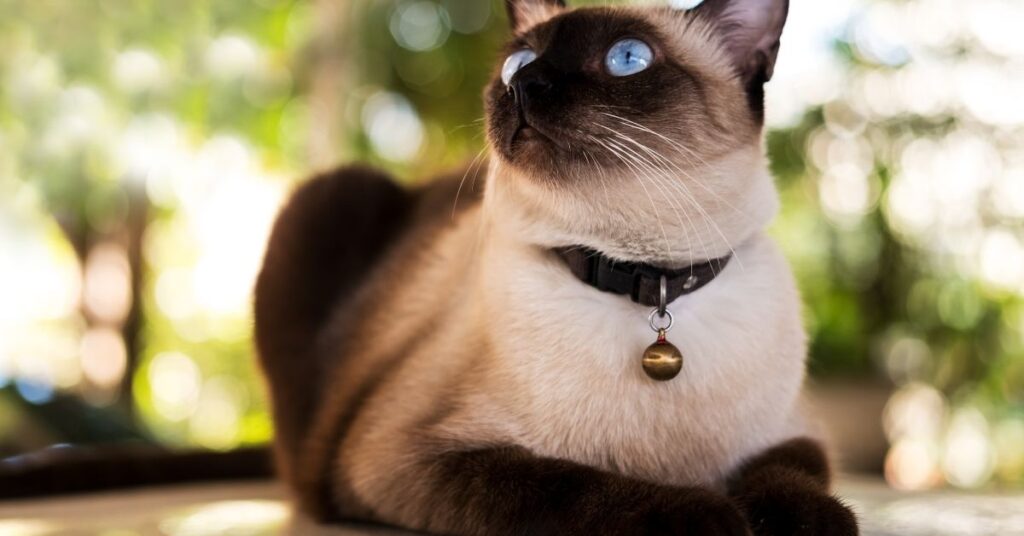
9. Longhaired cats originated from colder climates
It seems logical some cats evolved longer hair to keep themselves cool. As it turns out, that logic is true.
Long hair cats may have descended from cats living in colder climates like Russia, Iran, and Turkey.
Some breeds of longhair cat include main coon and ragdoll.
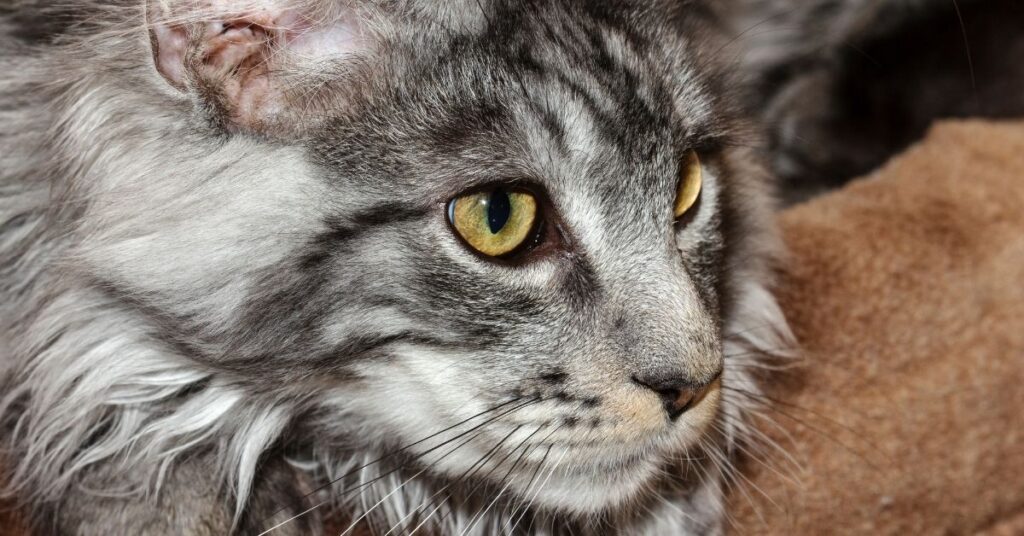
Conclusion
Cats can have one to three colors on their coat. This is due to a large variety of genes that control and modify colors and patterns.
A bicolor cat can be a black and white or a black and red cat (the latter is mostly found in females). A tri-colored cat is usually female due to sex-linked genes.
Some colors are rare on a cat’s coat. Silver, fawn, blue, and cream are far less common due to needing very specific genes.

Comments are closed.